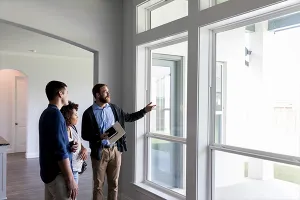Cities respond to increase in rentals with new regulations
For the last four years economic conditions and a surge in foreclosures have created an ongoing trend in America.
The number of renters is growing, while those owning homes has dropped, according to the 2011 State of the Nation’s Housing study published by Joint Center for Housing Studies at Harvard University.
The Harvard study points out that from 2006 to 2010 the number of renting households grew by an average of nearly 700,000 annually, bringing the total number of renters in the nation to 37 million.
But this shift from homeownership to rental properties is creating a tension that appears to be spreading across the country.
Cities and municipalities are responding to the increase in rentals by examining their own policies and moving to either restrict the number of rental properties, ban new rentals, increase the costs with renting property or, in some cases, examine implementing policies when none have existed before.
The activity begs the question: will regulations step on property rights or will they improve the quality of life and provide safer environments by cracking down on absentee landlords?
And what impact, if any, will the ordinances have on smart growth?
“We’ll know after the fact, as always,” said John McIlwain, who for the last 10 years has been a senior fellow at the Urban Land Institute and has for 40 years worked in the housing industry.
But the battle lines are quickly forming even in relatively small towns.
This past September the tiny town of West St. Paul in Minn., population 19,400, enacted an ordinance to limit rental density in single-family residential communities by limiting the number of rentals per block to no more than 10 percent, effective January 1, 2012.
City officials say a preliminary map of the city showed that five blocks in the northeast area of town exceed the 10 percent cap.
Mayor John Zanmiller said the city is reacting to unscrupulous landlords and investors who have bought foreclosed homes and turned them into rental units. The properties, he said, are not well maintained and residents went to City Hall seeking an answer.
He acknowledges there have been concerns about whether the ordinance infringes on private property rights, but says the objections have been raised by those who live outside the city.
The city has agreed to exclude current rentals from the requirements and also allowed two-year provisional licenses for existing property owners who aren’t renting now but may be forced to do so in the future if they are forced to relocate from the area and can’t sell their homes. Temporary exclusions are allowed for other hardships.
“We are not arbitrarily prohibiting something. We are exercising some of our rights to regulate,” Zanmiller says. Zanmiller also makes clear that the new ordinances don’t preclude renting.
“We are going to allow people to rent in town; we just don’t want it concentrated in one area,” he said, adding that if that were to occur the city would “allow housing values to decrease because of the problems with the bad landlords and bad tenants.”
City of West St. Paul Community Development Specialist Susanna Wilson said there are 387 rental dwelling buildings registered with the city, about one-third of which are single-family homes. Since the ordinance was passed in September 2011, there has not been a dash to register any new rentals with the city before the new ordinances take effect.
“Other than having quite a few calls come in, I haven’t seen any abnormal number of applications come in as of yet,” said Wilson. “That’s not to say that may not happen.”
John Periard, Government Affairs Director of St. Paul Area Association of REALTORS®, said the association was active in trying to stop the ordinance. His group has concerns that the ordinance can lead to more foreclosures because it can prevent someone in need of additional revenue from easily renting space in their house. It also could limit someone’s ability to sell a home to prevent a foreclosure, he said.
REALTORS® testified at public meetings and were encouraged to contact their city council representative Periard said, but to no avail.
“This is going to cause problems for REALTORS®, and it’s bad public policy,” he said.
Zanmiller disagrees with Periard and believes the ordinance may be a harbinger of things to come for other suburban areas.
“Representatives from other cities around us are asking us, ‘How did you do it? What was your reasoning?’” Zanmiller said.
McIlwain said he understands why the city of West St. Paul passed the ordinance, but predicted that it wouldn’t be effective because he says you can’t control where foreclosures will occur.
“It’s like King Canute trying to tell the tide not to come in,” McIlwain said, referencing an apocryphal legend associated with a Danish king.”There’s no way to control it.”
McIlwain said the percentage of homeownership in cities always has been lower than ownership rates in suburban in [suburban communities] is that their neighbors will be homeowners as well.”
But all that is changing.
In the second quarter of 2011, homeownership rates hovered at just under 66 percent, said McIlwain. That’s down from an all-time high of 69.2 percent in 2004 and that figure, McIlwain said, has “been falling steadily since.”
At 65.9 percent, homeownership rates still are higher than what they were in the period between the 1970s though the 1990s, where rates oscillated between 62 percent and 64 percent.
McIlwain predicts that rates will eventually return to those figures in part because of the shifting demographics of homeowners. McIlwain said “Generation Y,” also known as the “Millenials,” aren’t as apt to buy homes as the previous generation.
“They are staying in place with Mom and Pop or when they move out, they are renting,” he said.
A recent analysis of rental income conducted by the New York City-based Trepp — which analyzes commercial real estate financial data — underscores the shift from homeownership to rentals.
Rental income in 2010 totaled $73.2 billion, a huge spike from the $29.8 billion collected in 2005. The spike in rental income stems mostly from the conversion of owner-occupied residents to rental housing. Between 2005 and the second quarter of 2011 there were 4.25 million conversions from owner-occupied residential spaces to rental spaces.
While rental units may not be the cause of all blighted communities, low-income rentals in disrepair were the impetus behind a six-month moratorium on new rental units passed by the city of Port Huron in Michigan back in the fall of 2010.
On the southern end of Lake Huron, Port Huron draws tourists with money during summer months. But like many areas, the city struggles with a high unemployment rate, higher than the national average. The number of jobs has decreased by 20 percent since November 2009, according to the Internet website simplyhired.com.
At one point, the unemployment rate in the city was 24 percent and when area workers lost their jobs their homes turned to rental units. Investors who were eager to meet the increasing need for rentals, “were purchasing foreclosed property for a song,” said Jodi Smith, an associate broker at Bauer Reno and Associates.
The city already had rental dwelling requirements on the books when it moved to place a one-year ban on new rental certificates. Smith, who is also president of the board of directors of the Eastern Thumb Association of REALTORS®, said the city wanted time to study its existing policies and see what could be done to address what she described as “some low-end rentals that were popping up.”
Smith likes to believe pressure applied by her association, among others, led the city to reconsider the year-long ban and, instead, ban new rental certificates for six months. And in advance of the city actually approving the moratorium, Smith says the Eastern Thumb Association of REALTORS® advised homeowners to register their homes as potential rentals so they could be exempt from the moratorium as well as any new housing ordinance the city would pass.
That, Smith said, protected homeowners who were forced to leave the state for job opportunities, but couldn’t sell their homes.
“We had a duty to look out for the rights of consumers, investors and property owners,” Smith said. “And there really wasn’t any other group standing up to them other than us. We wanted to work with them, but we wanted them to know we are watching.”
After a six-month moratorium the city adopted an ordinance that increases to $500 new rental application fees. Under the new ordinance, in order to be certified a rental unit, the space must pass inspection — whether it be a bedroom in a house or an apartment complex, or paid for through cash or barter.
Additionally, a local person responsible for the rental dwelling must be on file with the city and be responsible for giving the city access to the space.
The $500 deposit can be returned to the owner if after two years there are no fines issued against the rental unit.
Smith says she thinks that moratorium has reduced the number of investors looking for property.
“They migrated toward properties in the suburbs, which welcomed them with open arms,” she said.
Outside of statewide landlord tenant laws and building and zoning requirements, there are some cities that have no rental dwelling ordinances on the books. Such is Seneca, South Carolina, nine miles outside of the college city, Clemson.
When tenants in Seneca complained to the city about the quality of some of the rental buildings on the market, Seneca Director of Planning and Budget Ed Halbig said the city decided it could be time to implement policies. It borrowed from policies that were in place in nearby Clemson.
It became clear after two public meetings, which were well attended by REALTORS®, that the proposal had little support.
“It’s dead,” Halbig said of the rental ordinance. “At some point we may have to address it in long term, but in the short term, no.”
Halbig said the ordinance would have required all residential rental unit owners to register their rental units with the city and to obtain a residential rental unit permit and a business license. The ordinance also would have required all rental units to be inspected prior to the issuance or renewal of a permit.
Halbig said the ordinance would have precluded property owners from illegally converting space in a single-family home and renting to large numbers of tenants. There are a growing number of homeowners who are illegally renovating and converting spaces in their house to take advantage of what he says is a growing rental demand, said Halbig.
“There just seems to be a number of economic pressures here and people are seeking out cheap housing,” said Halbig. “And at the same time you’ve got folks who see that as an opportunity to take advantage of those people.”
Halbig said the proposed ordinance also addressed the sentiment that some investors who owned multiple rental properties should be considered “businesses” and be required to have licenses to operate.
Kevin Cope, a broker with the self-named Cope Property Management as well as FirstChoice REALTY, said there were concerns among investors and homeowners that the ordinance would increase the costs of owning and maintaining rental property and that the requirements could also affect the sale of rental property in the area.
Cope, president of the Western Upstate Association of REALTORS®, also said the sentiment in the community was that existing ordinances gave the city the authority to ensure that homes were safe and that a new ordinance wasn’t required.
“Ninety-five percent of landlords do a good job because otherwise tenants move out and move somewhere else,” he said, adding, rental properties are not the cause of all blighted neighborhoods.”








